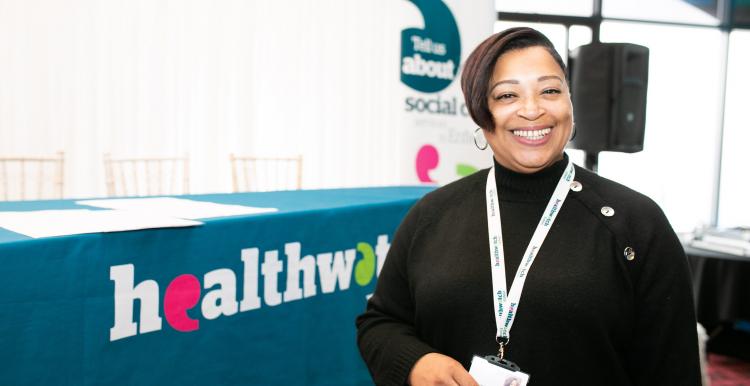How can we make our information as accessible as possible?

Clear, accessible information is essential to helping people make decisions about their health and care and get the most out of services. Last month, we told you about our campaign to look at accessible health and social care information. We also said it was an excellent opportunity to see what more we can do to make our communications accessible.
Here we look at what steps we have already taken and how we plan to build on these.
Making sure we have the right policy in place
Although the Accessible Information Standard only applies to health and social care services, we will be reviewing our policy to ensure our information is as accessible as possible. We will also provide guidance and templates for you to use to improve the accessibility of your own materials.
The areas we plan to review includes:
- Our accessibility policy and providing you with a local version you can use
- Easy read training and resources for the network
- Additional accessibility guidance
- Making sure our information is digitally accessible
Digging into the details
Easy read support
We already produce some core documents in an easy read format, but we also started to provide easy read training for you this year. The training has been extremely popular, so as well as putting on further events, we will review how we can make this training more accessible and what other resources will make it easier for you to produce easy read publications. These resources could include easy-to-read pictures and definitions of terms to use in your easy read materials.
Digital accessibility
An external company has already tested the current Healthwatch national and local website template to meet the international Web Content Accessibility Guidelines. The current template is AA compliant.
We also introduced the ability for any content on the national and local websites we support to be translated by users into a language of their choice should they not speak English fluently.
The Web Content Accessibility Guidelines are being updated, with the amendments due to be announced in the Autumn 2021. We are also in the process of upgrading our website template and so will test our national and the local website template to make sure we continue to meet digital accessibility standards.
Read our website accessibility guidance
Brand accessibility
As part of our brand refresh, we have tested our new messages and information about Healthwatch with the public to ensure they are clear and easy to understand. We have also produced a new tone of voice that encourages us all to communicate in a clear, easy way for our audiences to understand.
As we strengthen the visual side of the brand, we are continually testing the concepts to ensure we only develop visually accessible options.
As we roll out the updated brand, we will produce new documents and videos on who Healthwatch are and what we do. We will ensure that these are available in accessible formats, such as easy read, British Sign Language versions of the videos and translated into different languages.
Guidance to help you
We currently have several guidance documents to help you ensure your communications are as accessible as possible. We will review all these guidance documents, update them, and provide more to cover any gaps we find over the next few months.
Current guidance we have available includes:
Sign up to our accessible information campaign
In January 2022, we are launching a campaign to understand the issues people face when receiving clear, accessible information about their care. It will also look at whether services are delivering the Accessible Information Standard.
We will then encourage services to implement changes in both policy and practice to improve the accessibility of their information.
As part of this campaign, we will be asking the public:
- Are you aware of your rights to accessible information?
- Are services delivering what you expect?
- Do the rights you have go far enough?
